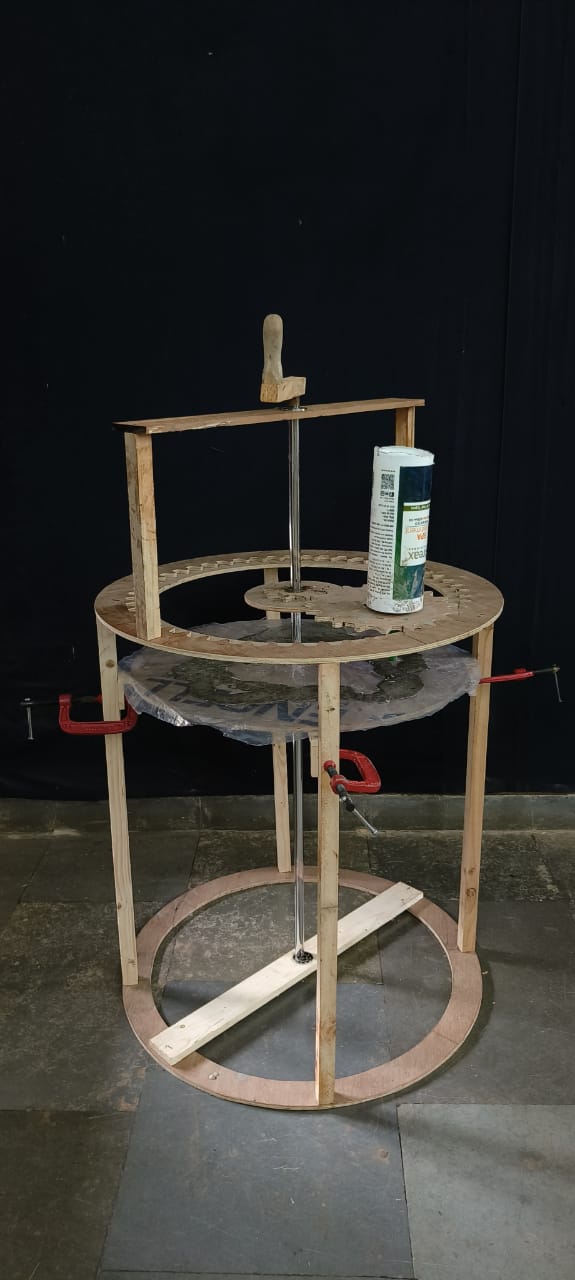Allied Studies, Dushyant Asher
The Architecture Kitchen
The studio emerged at the intersection of materials and technologies in the and aimed at exploring the relationships between humans, apparatus and the act of making itself. We discussed the importance of the act of making as a process. The metaphor of an architectural kitchen suggests the experimental nature of the studio, with a perpetual emphasis on making, regardless of its success or failure, where taste, ingredients and recipes are the drivers of knowledge making and sharing. The studio began with each participant’s experience of making in any context or form which helped expand the concept of making as a way forward in the process. In an ongoing generative movement that is at once itinerant, improvisatory and rhythmic, and may or may not have a finished end result; rather than a backward process from a finished object to an initial intention in the mind of an agent.
Through readings by texts of Vilem Flusser’s essay ‘The factory’ and ‘Are we human’ by Beatriz Colomina & Mark Wigley the ideas of agency and apparatus were discussed with an historical review of tools, artifacts and their cultural relevance. Historically, the acquisition and transfer of knowledge is located through scriptures and other forms of literary records. Flusser believes an alternative approach of reading history through the spaces of manufacturing alongwith the artifacts and their making process itself holds a richer understanding of the culture, revolutions and life itself.
Here, the hand is the most primitive tool known to humankind which not only held its own agency in making but also ensured that the process of making happened with a constant engagement between human, environment and culture. With technological innovations, tools, machines and robots became subsequent simulations of the human hand. But the agency of humans here shifted to the programming and coding of the machines and robots whereas the agency of making became of the simulations. This participation of the human and non-human agency was discussed and explored through both research of existing practices, cultures and crafts; and material experimentations within this studio.
Continuing researches and experiments done in the previous years of the studio and the school, broadly two material experimentations were undertaken, 1) the gravity apparatus - exploring glass fiber and resin composites; and 2) additive processes to generate material forms. And 3) a research and analysis of the current material practices and locating the agency of making through human and non human means.

Four studies were undertaken simultaneously in the studio:
The intent was to explore form derivation of a suspended surface with only the force of gravity and minimal external forces.
Material mixes for Delta 3D printer and a 3D spirograph - series of material tests were conducted to check the material viscosity and material deposition through additive processes by layers. Two methods were explored and subsequent tools were made, a delta 3D printer and a 3D spirograph.
Delta 3D Printer - With the aim of experimenting with digital generative tools, a subsequent simulation, in the evolutionary chain of hands, with its own agency and autonomy in the making process; an attempt at assembling a delta 3D printer by repurposing parts from a cartesian 3D printer resulted in the making of a delta 3d printer which is an evolving tool that will keep exchanging parts to evolve every year.
3D spirograph - The 3D spirograph is a 3 dimensional attempt at exploring the material patterns that get deposited in the additive process that emerges in the geometric possibilities of the spirograph. It defines the path for material deposition and giving form to additive layers and the patterns that the spirograph produces.
- Experimentation with the glass fiber and resin composite:
The intent was to explore form derivation of a suspended surface with only the force of gravity and minimal external forces.
- Additive material processes :
Material mixes for Delta 3D printer and a 3D spirograph - series of material tests were conducted to check the material viscosity and material deposition through additive processes by layers. Two methods were explored and subsequent tools were made, a delta 3D printer and a 3D spirograph.
- Tool evolution:
Delta 3D Printer - With the aim of experimenting with digital generative tools, a subsequent simulation, in the evolutionary chain of hands, with its own agency and autonomy in the making process; an attempt at assembling a delta 3D printer by repurposing parts from a cartesian 3D printer resulted in the making of a delta 3d printer which is an evolving tool that will keep exchanging parts to evolve every year.
3D spirograph - The 3D spirograph is a 3 dimensional attempt at exploring the material patterns that get deposited in the additive process that emerges in the geometric possibilities of the spirograph. It defines the path for material deposition and giving form to additive layers and the patterns that the spirograph produces.
- A research study exploring relationships between apparatuses and cultural life; and its intersection with built forms.

Participating Students:
A18 - Ria Shah, Dhruv Sachala and Netra Khodke.
A19 - Shreya Mehta and Rachit Somani.
A20 - Subodh Shelke and Gauri Shinde.
A21 - Shreeraj Narwade and Lavanya